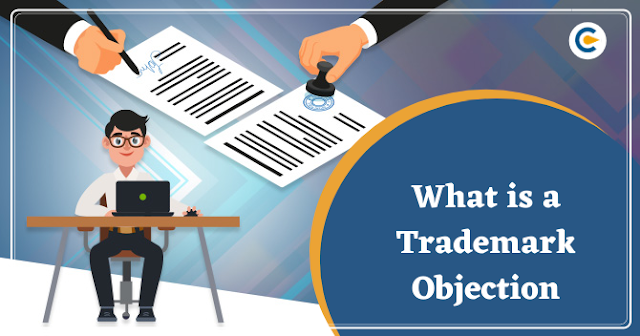What is a Trademark Objection, and How to respond to it?
When the status of a trademark is shown 'objected'
on the official Trademark Registry website, this states that the trademark
examiner or any other entity has raised objection over the trademark. Trademark
objection has to be handled carefully and considered the most vital stage of
the trademark registration process and it is considered as the most vital
stage of the process of trademark registration.
Trademark objection is included in the
procedure of trademark registration.
The trademark objection will raise the objection on the base of the
findings during the examination process on certain goods and products. The
objection's reply should be convincing and must properly answer the raised queries, or else, it can get
trademark application rejected. The trademark should not be identical or
similar to any other organization's mark; the trademark must be unique in every
possible way.
Trademark registration provides rights
and protection to the protected intellectual property in India. The Indian
Trademark Act of 1999 covers rights such as legal protection from infringement,
registration, a nd objecting to a trademark by government authority.
Trademark Registration Process
Any other entity or individual cannot use a registered trademark without the consent of the registered entity; thus, trademark registration protects intellectual property from infringement or any other violation.
How
to respond to Trademark Objection?
After the objection is filed against the proposed trademark,
the applicant will be served a notice stating the objection's reasons. After
reading the notice carefully, the applicant has to pursue the following steps
for filing a response against the objection notice:
· Receipt of Trademark Objection
Once the objection notice is received regarding the
trademark, the applicant has to thoroughly analyze the objection notice and
leave no room for doubt as the trademark objection is
considered the most vital stage of the trademark registration process.
· Reply to the Objection
After analyzing the reasons of objections thoroughly, the
applicant has to file a counter-statement against the raised objections. The
applicant has to ensure that the counter-statement contains proper answer with
supporting documents and law rules such as:
- Advertisement in the media
- A proof supporting that the trademark is available on the internet
- An Affidavit mentioning the use of the trademark
The applicant has to submit the supporting documents and
reply to the official online portal of trademark e-filing.
· Hearing
After the concerned authorities have received the
objection's reply, they will examine the response and submitted documents and
information. After the examination of the counter statement and provided
documents are completed by the authorities, the application may be accepted or
rejected. If the authorities accept the counter-statement, they will lift the
objection over the trademark and proceed with the remaining trademark
registration procedure. But if the authorities reject the counter-statement,
they may ask for more clarifications or need an explanation from the applicant,
for that, authorities will schedule another hearing. In case if the authorities
do not ask for any clarification or explanation, the applicant has to file a
new application for registering a trademark.
· Trademark Journal
Once the trademark authorities are satisfied by the
applicant's counter statement and have accepted the trademark, the anticipated
trademark will be published in the journal of trademarks. In case the proposed
trademark is rejected, the same will be mentioned in the journal of trademarks
with the reason for rejection.
· Review Petition
The applicant entity can file a petition for review within
30 days from receiving the rejection order to Intellectual Property Appellate
Board (IPAB). Under the review petition, the applicant has to mention the
grounds on which the trademark authorities issue the order of rejection. The
review petition must be submitted by paying the prescribed fee to Intellectual
Property Appellate Board (IPAB).
· Registration
Once the trademark is approved, the proposed trademark will
be published in the trademark journal and will remain open for four months for
any other individuals or organizations to raise objections. Suppose there are
no objections raised on the trademark by any entity during the time of 4
months. In that case, the trademark authorities will issue the trademark
registration certificate, which will contain the registered trademark and the
class in which it is registered.
Conclusion
Trademark objection has to be handled carefully and
considered the most vital stage of the trademark registration process and it is considered as the
most vital stage of the process of trademark registration. Trademark objection
is included in the procedure of trademark registration. The trademark objection will raise the
objection on the base of the findings during the examination process on certain
goods and products.




very detailed and informative article about trademark objection
ReplyDeleteI got here much interesting stuff. The post is great! Thanks for sharing it!
ReplyDelete